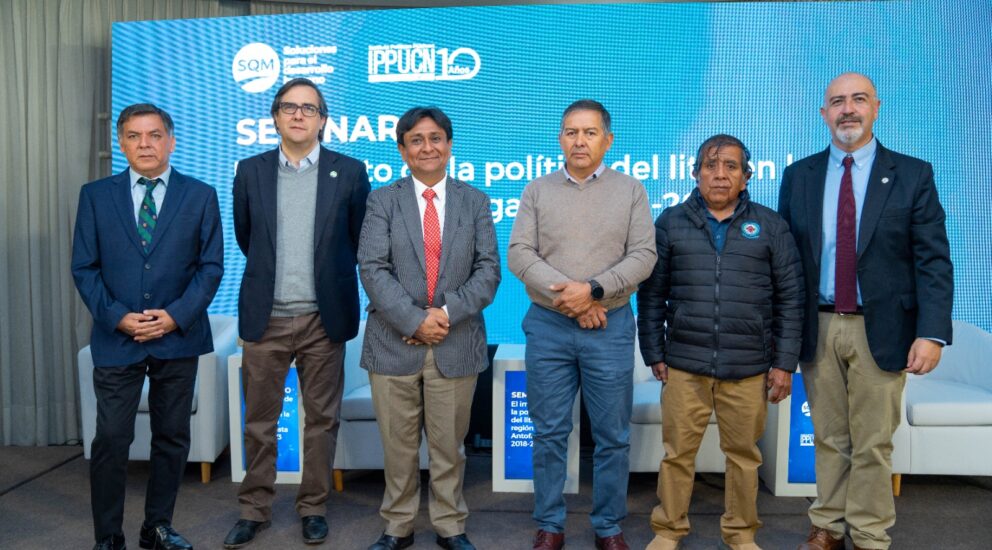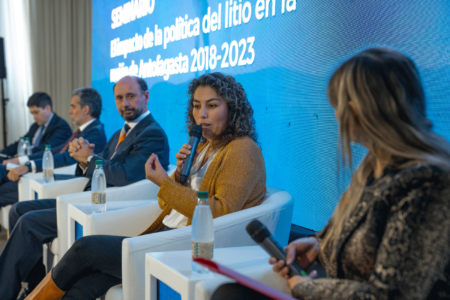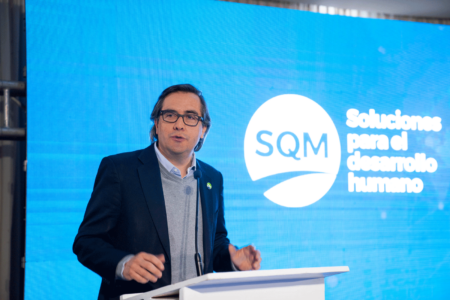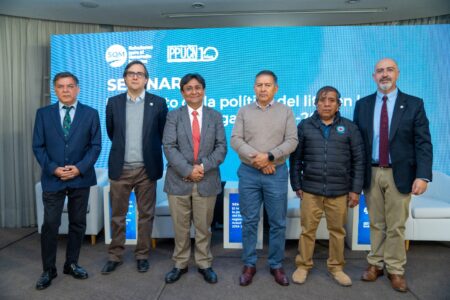
UCN IPP Seminar analyzed impact of lithium policy in the Antofagasta Region
07/Sep/2023
One of the most significant implications is that—by 2043—the total contribution to scientific and technological development in the area will be US$515 million.
The objective of the seminar “The Impact of Lithium in the Antofagasta Region 2018-2023,” organized by the Institute of Public Policy of the Catholic University of the North (UCN), was to analyze and discuss the results of the evaluation of contracts between the State and companies in the lithium industry.
The event, which took place in Antofagasta, was attended by authorities from the public, business and academic sectors, who commented on the industry’s developments, contributions and challenges.
This is not a minor issue considering that Chile has 50% of the world’s reserves (and 88% of Chile’s reserves are in Antofagasta), which makes the country the second largest producer in the world with a 27% market share. And the future is promising: estimates call for lithium demand to grow 256% by 2030.
RELEVANT CONTRIBUTIONS
This industry, based in Antofagasta, has become one of the most important for the country. In fact, in 2022 lithium carbonate shipments totaled US$7.8 billion, making it Chile’s second most exported product according to Central Bank figures.
A relevant change occurred in 2016, with the contract signed between the state and Albemarle and in 2018 with the extension to include SQM, which not only enabled an increase in production quotas, but also a direct and unprecedented contribution to regional revenue, especially for scientific and technological development.
In fact, calculations indicate that until 2043 (when Albemarle’s contract ends; SQM’s contract ends in 2030), the companies’ combined contribution to scientific and technological development will be US$515 million.
And there are already concrete advances such as the implementation of the Institute of Clean Technologies and the Center for Sustainable Acceleration of Electromobility, managed by Universidad de Chile. In addition, both companies have developed initiatives with Universidad de Antofagasta and Universidad Católica del Norte (UCN) for research and development on lithium batteries and their recycling.
The results were presented by Cristian Morales, Vice Chancellor for Strategic Development and Quality, and Cristián Rodríguez, Director of the Public Policy Institute, both from UCN.
On the topic, Cristián Rodríguez highlighted that the agreements not only brought “more integrity to the treatment of lithium, to the communities, to the territory and a new approach to governance, but have also yielded many fruits for the country with many more public resources for the Antofagasta Region, the municipalities and communities with a significant contribution to employment, regional exports and particularly the contribution to R&D.”
In turn, the regional governor, Ricardo Díaz, was emphatic about the need to promote dialogue between all the players that come together in the sector, to develop a long-term approach that defines responsibilities that ensure professional competencies, sustainable development and the progress of those who live in the Antofagasta Region.
CHALLENGES
After presenting the results, dialogue began to define the major challenges facing the industry. One is to establish where lithium resources are invested. Karem Gallardo, a faculty member at UCN, commented that the university is focused on developing research with regional relevance to train professionals who can work in the area.
Juan Ignacio Guzmán, CEO of Gestión y Economía Minera Limitada (GEM), said that the contracts with Corfo set a precedent for the industry to contribute more directly to the region, municipalities and communities.
Hermann González, macroeconomic coordinator of Clapes UC and professor at the schools of Economics and Law at Universidad de Chile, pointed out that one challenge is to estimate which resources can be used to finance public policies and which can be used for savings, because they must be distributed over time.
Another issue addressed by Juan Biset, a consultant specialized in mining and sustainability, was the private sector’s ability to analyze the market in order to make timely investments and adequately meet demand. He also pointed out that the global demand for greener energies gives Chile a unique opportunity, and called for not getting distracted and taking advantage of the potential of the country’s lithium reserves.
ENVIRONMENT
At the meeting, Francisco Mondaca, general environmental coordinator of the Council of Atacameño Peoples, an institution that represents 18 communities, said that more studies are needed to understand the behavior of the aquifers. “There is no baseline for the territory and critical variables, such as climate change, are not integrated,” explained Mondaca, who criticized the state’s behavior on the matter, an issue that has forced the council to move forward with its own environmental measurements, he noted.
Justo Zuleta, mayor of San Pedro de Atacama, and Vladimir Reyes, president of the Council of Atacameño Peoples, agreed that more efforts must be made to safeguard the ecological balance of the salt flat area, which they discussed with María Paz Troncoso, former undersecretary of Regional and Administrative Development.
For this, SQM has an online monitoring system (https:// www.sqmsenlinea.com/) intended to increase information on sensitive environmental systems and surrounding areas in order to enhance knowledge of their hydrogeological and hydrological dynamic and to maintain control in case deviations are observed and to take concrete, preventative actions to maintain the system as agreed in environmental commitments. This information is online and open to the entire community.


